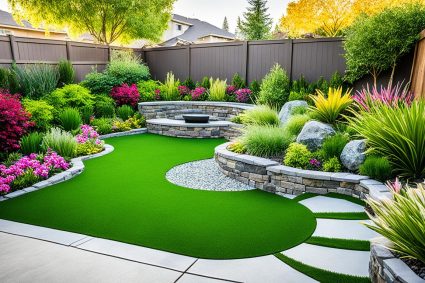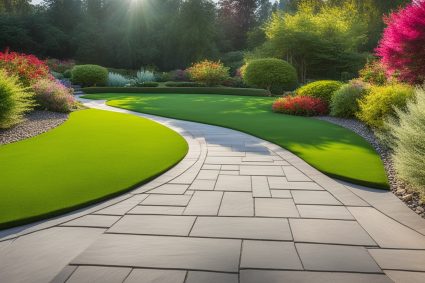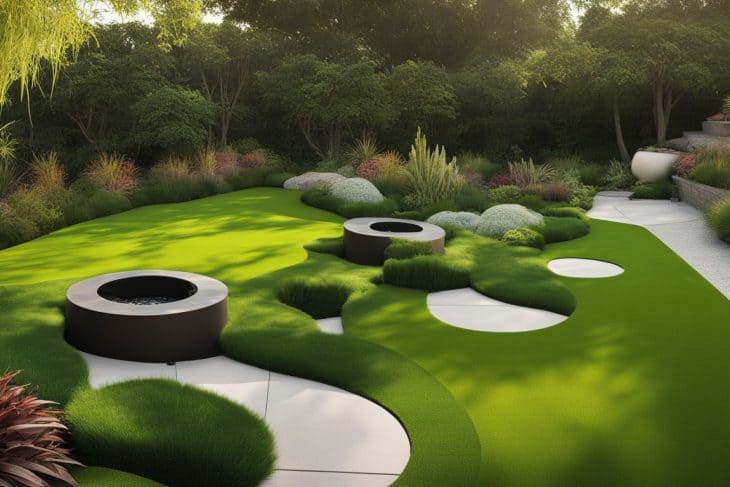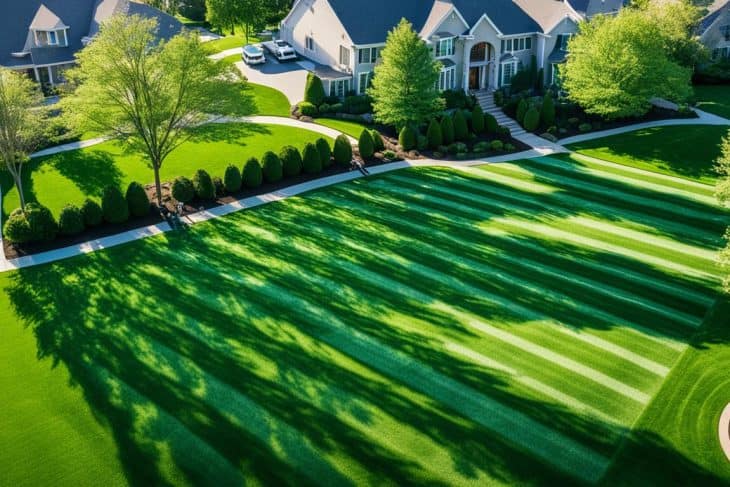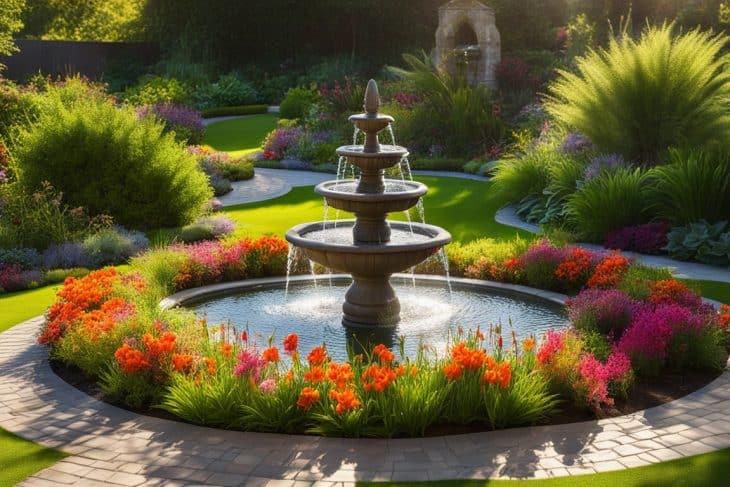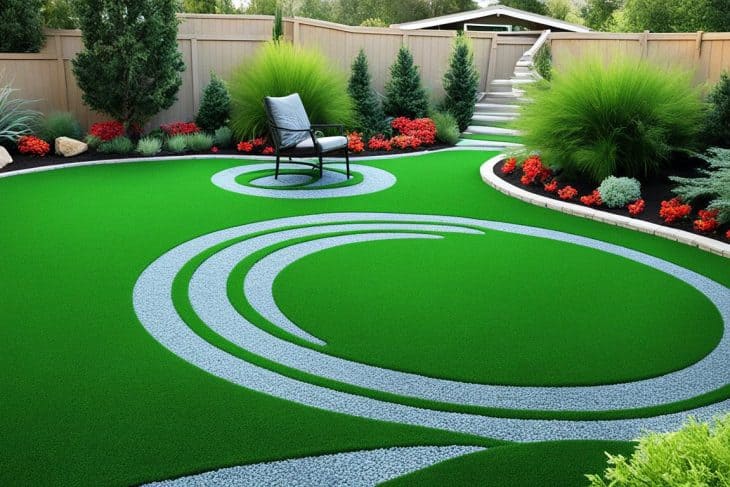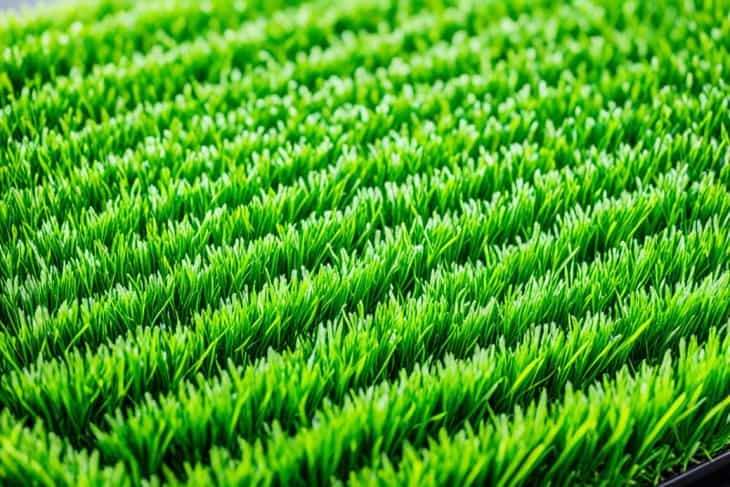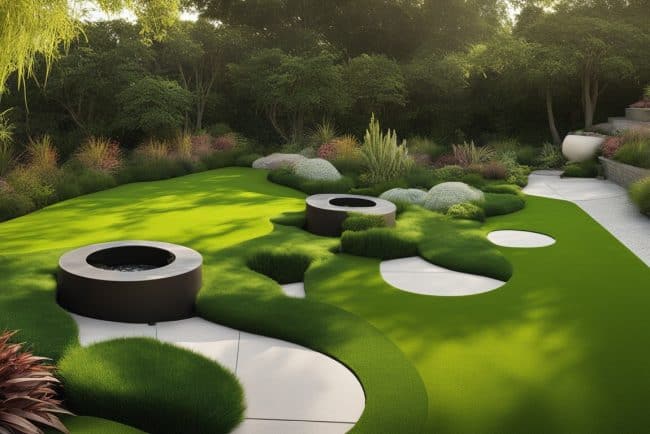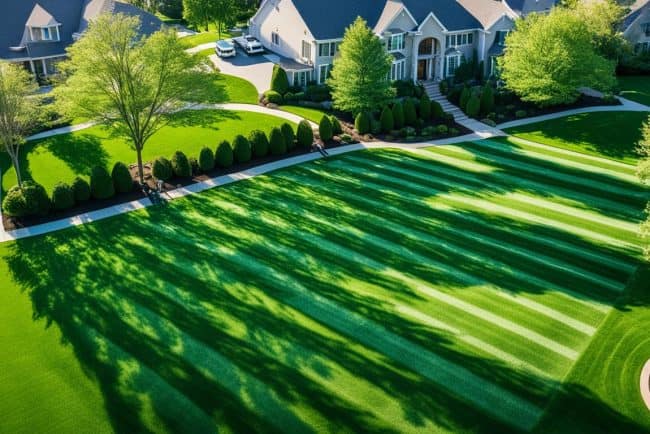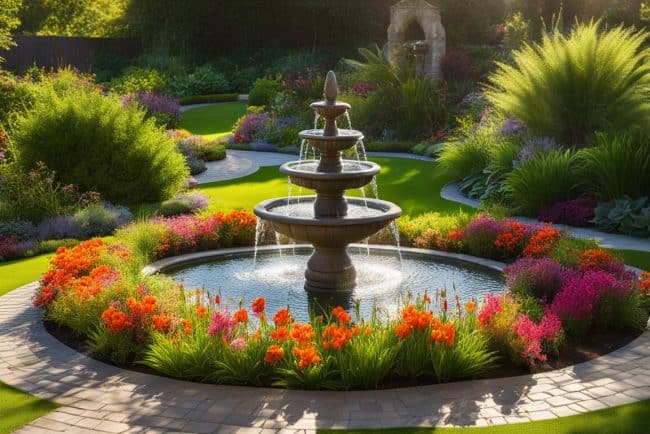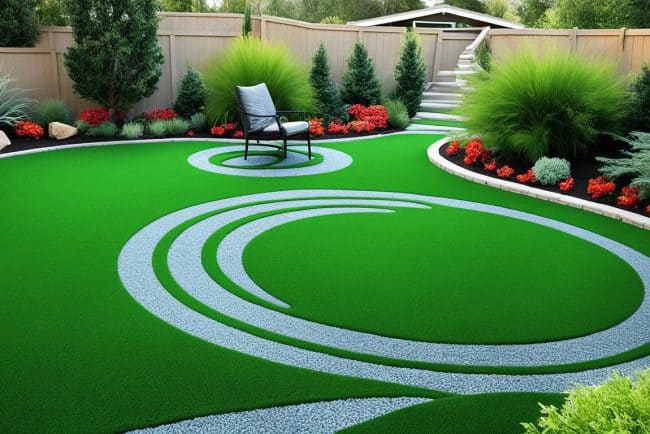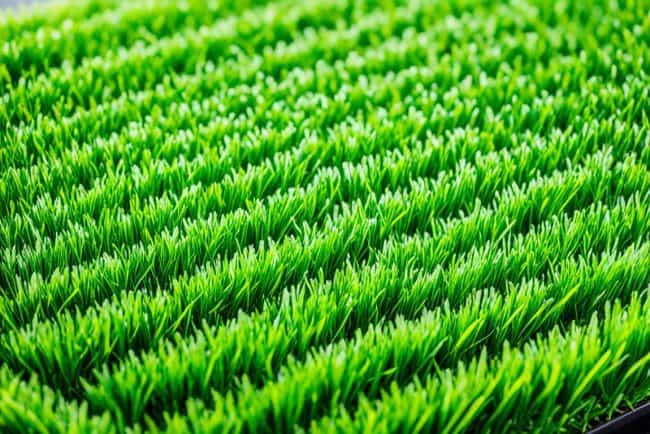
When I first moved to Texas, I was excited about having a beautiful, green lawn. But, maintaining real grass was harder and more expensive than I thought. My water bills went up to $200 in summer, and I spent more on fertilizers and pest control. Soon, my green lawn dream became a costly problem.
That’s when I learned about artificial turf. Changing to a fake grass lawn could save me thousands every year. In the DFW area, a 1,000 square-foot artificial lawn saves between $6,550 to $7,250 annually. With my lawn costs soaring, switching felt like the right move.
Standing in my backyard, I imagined a carefree, beautiful space. No need for mowing or constant watering. Given the savings from synthetic grass, switching made sense. It promised a more affordable future for my home.
Understanding the Costs of Natural Grass Maintenance
Keeping a natural grass lawn costs a lot. You have to pay for monthly water expenses and lawn care. It’s important for homeowners to know about these costs. Let’s look closer at what they involve:
Monthly Water Expenses
Watering your lawn is expensive. Homeowners use about 12,000 to 15,000 gallons of water each month. This leads to water bills of $180 to $225. Hotter areas may see even higher bills during droughts. So, monthly water expenses can really impact your budget.
Recurring Expenses: Fertilizers and Pesticides
Lawns need fertilizers and pesticides to stay healthy. The costs for these recurring expenses change based on lawn size and condition. Homeowners spend about $500 to $1,500 a year on them. Using the right products at the right times is key to keeping your lawn green, which adds to the expense.
Lawn Care Services
If you don’t want to care for your lawn yourself, you might hire professionals. Lawn care services cost $100 to $300 a month. That’s $1,200 to $3,600 a year. They do things like mowing, weeding, and edging to keep the lawn looking good. Given these high costs, some people think about using artificial turf to save money in the long run.

Calculating Long-Term Savings with Artificial Turf
Switching to artificial turf saves money in the long run. Installing artificial turf costs between $8 and $14 per square foot. This depends on the material and how it’s installed. Homeowners see big savings over time, making it a smart choice financially.
Initial Installation Costs
Installation costs vary based on the material and labor. Polypropylene is the cheapest, while nylon is more expensive. Initial costs are high, but you can save by doing some work yourself. You can choose cheaper materials or prepare the site on your own.
Comparative Analysis Over Years
Switching to artificial turf leads to big savings. A 1,000-square-foot lawn could save between $6,550 and $7,250 the first year. Over 20 years, savings could reach around $21,000. You can spend around $1,000 less each year on lawn care. Many homeowners are choosing artificial turf for its long-term benefits.

Cost Efficiency: The Financial Benefits of Artificial Turf
Switching to artificial turf brings big financial benefits for both homes and businesses. By looking at how much you save on yearly upkeep and water, the savings are huge.
Yearly Maintenance Savings
Artificial turf means big savings every year. Keeping artificial grass looking good costs about $250 to $350 a year. This is much less than the $1,600 to $1,700 you would spend on real grass. With artificial turf, you save on mowing, feeding, and pest control, so you have more money for other things.
Savings in Water Usage
Artificial turf also saves a lot of water. This is especially true in dry areas. By choosing artificial over real grass, homeowners save hundreds of gallons of water each year. Using less water cuts down your bills and is better for the planet. It’s a smart way to be more eco-friendly and save money too.

The Environmental Impact of Switching to Artificial Turf
Switching to artificial turf helps the environment a lot. It’s good for saving water and cutting down on chemicals. People are learning how important it is to keep their yards eco-friendly. That’s why more are picking artificial grass instead of natural.
Water Conservation Benefits
Artificial turf is great for saving water. A normal lawn uses up to 17,000 liters of water each year for each home. But, artificial grass hardly needs any water, just some rinses now and then. This helps save a lot of water, especially in places that don’t have much rain. By choosing synthetic grass, we can save millions of liters of water every year. This helps in the efforts to keep our water sources safe.
Reduction in Chemical Usage
Using artificial turf means we use fewer chemicals like fertilizers, pesticides, and herbicides. This is good because less chemical runoff goes into our rivers and lakes, keeping the water cleaner. When we use fake grass, we help make the environment around us better. There’s less pollution and our yards become places that don’t attract pests. This also means our homes are safer because there are fewer allergens and harmful chemicals.
Durability and Longevity of Artificial Turf
Artificial turf is a great choice for homeowners who want a durable lawn. It can handle a lot of foot traffic and different weather. Unlike natural grass, it doesn’t need much upkeep or new seeds often.
Resistance to Wear and Tear
This turf uses tough materials to stand up to damage. It works well for homes and businesses, no matter the weather. It keeps looking good without needing many repairs, saving money over time.
Expected Lifespan and Return on Investment
Artificial turf can last more than 20 years with proper care. Natural grass needs new seeds every so often, costing more in time and money. Artificial turf cuts down on water and care costs. It also adds value to your property and saves you from constant lawn work.
Enhancing Property Value with Artificial Turf
Adding artificial turf to your property can boost its value. It’s attractive to those looking for beautiful, easy-to-care-for lawns. Future homeowners love the convenience and the look of a green lawn without the hassle.
Desirability for Future Home Buyers
Artificial turf makes a home stand out to buyers. They love lush, green yards because they make a home look better. Homes with synthetic grass need less work, which is great for people who want beautiful yards without the effort. Such lawns look great, save water, and attract buyers who care about the planet.
Impact on Resale Value
Artificial turf can really increase a home’s selling price. Homes with nice yards might sell for 15-20 percent more than those without. The money spent on artificial grass often pays off because it needs less upkeep. It makes your home more appealing and is great for families with pets or kids because it’s strong and doesn’t cause allergies.
Getting artificial turf isn’t just about making your place prettier. It’s a wise choice that improves your property’s value and meets buyers’ needs.
Steps to Transition to Artificial Turf
Switching to artificial turf is an exciting change. Let me share the key steps for installation. It begins with thoughtful planning and solid research. I look at my lawn’s needs and set a budget that’s reasonable. The cost of artificial grass ranges from $2 to $20 per square foot, based on its quality.
After setting my budget, I choose a high-quality turf. It usually has a longer warranty and looks more natural. Consulting with a pro installer helps too. Their know-how makes the process smoother and ensures great results. Getting the site ready is next. This means clearing it, checking soil quality, and making it level. It prevents problems when installing.
Then, I focus on the actual installation. This includes fixing the edges, connecting the turf rolls, and putting in infill, like sand or rubber bits. Switching to turf improves my outdoor area and helps save water. No more constant watering or upkeep. With these steps, I’m all set for a beautiful, easy-care lawn for many years.
